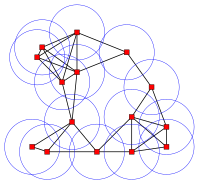Discrete geometry

Discrete geometry is like playing with shapes and points on a video game or board game. You only get to play with a few shapes and points that are already there, and you have to move them around in a certain way to solve puzzles.
For example, imagine you have a puzzle where you need to connect all the dots in a certain order, without lifting your pencil off the paper. That is a form of discrete geometry! You only have the dots to work with, and you can only move in straight lines between the dots.
In math, discrete geometry involves studying shapes and figures that are made up of individual points or pieces. These shapes have to be represented by a finite number of points or lines, and are not continuous - like a circle or a line that goes on forever.
So, in discrete geometry, you examine how those shapes fit together, and the relationships between their individual parts. You don't have to worry about curves, infinity or calculus, which can make things a bit simpler looking. Discrete geometry has lots of applications in computer graphics, robotics, and even map-making, because all of those areas rely heavily on working with limited amounts of precise data points.
Overall, discrete geometry is like playing with Legos, with clear rules and possibilities, rather than dealing with messy blobs of play-dough!
For example, imagine you have a puzzle where you need to connect all the dots in a certain order, without lifting your pencil off the paper. That is a form of discrete geometry! You only have the dots to work with, and you can only move in straight lines between the dots.
In math, discrete geometry involves studying shapes and figures that are made up of individual points or pieces. These shapes have to be represented by a finite number of points or lines, and are not continuous - like a circle or a line that goes on forever.
So, in discrete geometry, you examine how those shapes fit together, and the relationships between their individual parts. You don't have to worry about curves, infinity or calculus, which can make things a bit simpler looking. Discrete geometry has lots of applications in computer graphics, robotics, and even map-making, because all of those areas rely heavily on working with limited amounts of precise data points.
Overall, discrete geometry is like playing with Legos, with clear rules and possibilities, rather than dealing with messy blobs of play-dough!
Related topics others have asked about:
